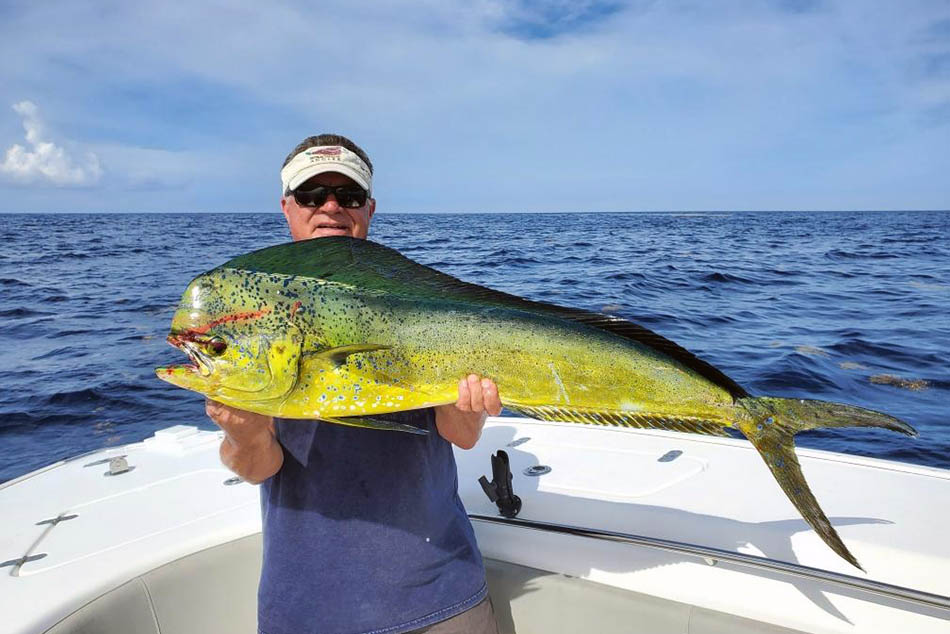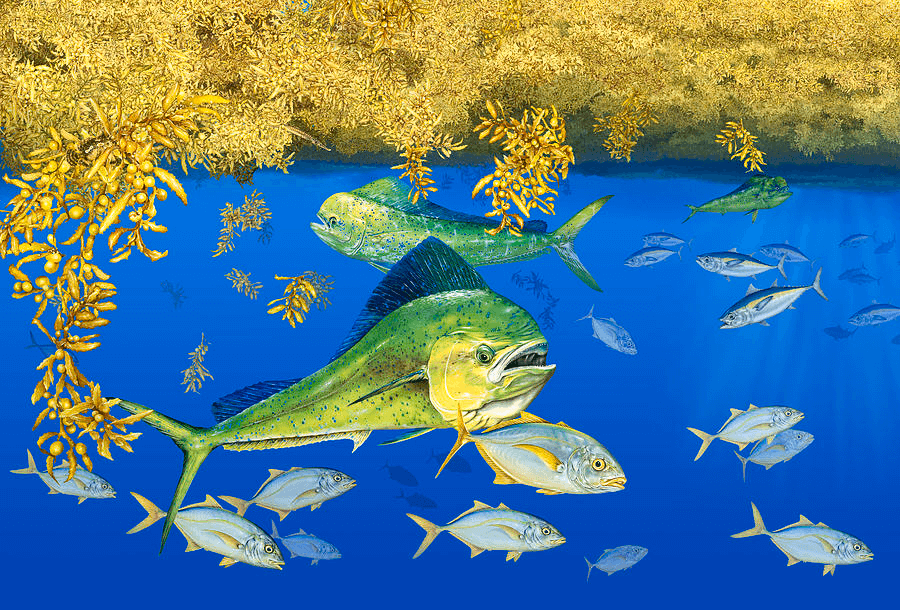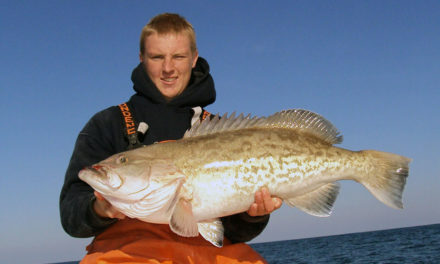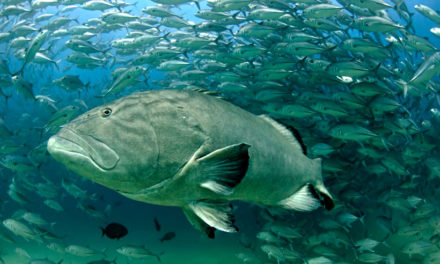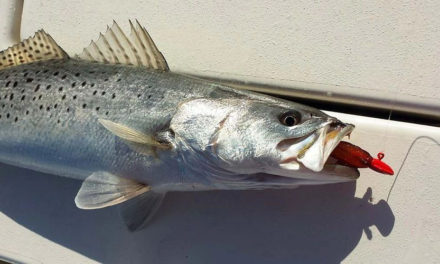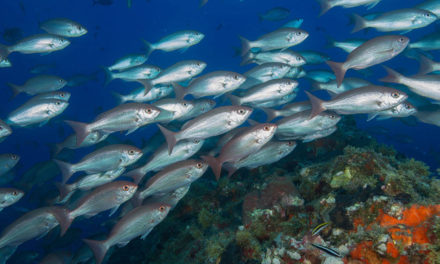With or without structure or marking bait, the weed line is home to all types of life.
We are seeing a heavy line of sargassum right now. Here’s how to make the best of it.
Along with grass comes fish. Were having a great dolphin year, with some nice yellowfins and wahoo in the mix. The grass is a wonderful thing if you know how to take advantage of it.
It’s a well-known fact that the surface trolling bite slows as the sun rises to the 10 to 11 a.m. position. This is the reason to get baits down where the fish are, rather than continuing to troll surface baits while the one “meat stick”—the deep planer rod- gets all the bites. Tuna and wahoo don’t wear Maui Jims. When the sun penetrates deeper into the water, they simply go lower in the water column.
And … who says you have to be moving at 6-8 knots to get bites? Why not slow down and put several lines down where the fish are? It can result in steady, sometimes multiple hook ups. There are several ways to accomplish this. You can use downriggers with release clips, use heavier trolling lures that fall when you occasionally take the boat out of gear, or use planer lures coupled with a slower speed to get baits down.
For example, a beautiful swimming (frozen) squid or ballyhoo on the downrigger is a ringer for the wahoo and tuna bite. An artificial squid with an attached natural bait on a planer jig head or a deep-diving plug will also get bites. In addition these choices, a spread of slow- trolled live baits down deep is the ultimate offering. We have several videos detailing the options listed above on our website.
With all the sargassum grass this year, this may be an especially attractive alternative to the standard 7 knots. When you’re constantly “shaggin’ grass,” you’re not as effective, and it’s not good for moral when deck hands fight more grass than fish. If you slow troll down a nice weed line with beautiful baits down deep in the strike zone, chances of getting bites are much better than shaggin’ grass at normal speed. Find structure and bait near a weed line and you’ll have the scenario for success. With or without structure or marking bait, the weed line is home to all types of life. We’ve cleaned yellowfin tuna with a double handful of file fish in their stomachs the size of a quarter and smaller, along with small bit of grass.
If the weeds are not too scattered, troll as normal to find the fish. When the sun gets up, slow down and concentrate on the areas you had bites earlier. Remember that the weeds are moving, along with everything that lives and feeds around the mats. Keep an eye out for other items floating in the grass mats to help keep up with your relative location.
Easiest rigging possible for squid. Plug and play, easy as hook it in the mantle, toss it overboard and it swims perfectly.
EVERYTHING eats a squid!
This video shows the tools needed to rig a squid.
SALTWATER TACKLE YOU MAY WANT TO TRY:
7/0 and 11/0 J-Hook Chin Weights: Target fish include Tuna, Wahoo, Mahi or Common Dolphin, King Mackerel, Wahoo, and more. Easy to rig!
4 oz. Crab Decoy Jig: Target fish for Striped Bass, nearshore Drum, Snook, Grouper, west coast bottom fish, and more.
4 oz. Tuna Squid Decoy Jig: From the eastern, western, Alaskan, and gulf coasts, target fish include: Tuna, Dolphin, Wahoo, Fluke, Flounder, Striped Bass, Seabass, Amberjack (east coast), Yellow Tail (west coast), California White Sea Bass (west coast), Grouper, Snapper, Halibut, Ling cod, and all Alaskan bottom fish.
8 oz. - 12 oz. 10/0 Squid Decoy Jig: Catch BIG Grouper, Amberjack, Giant Stripers, and more.

